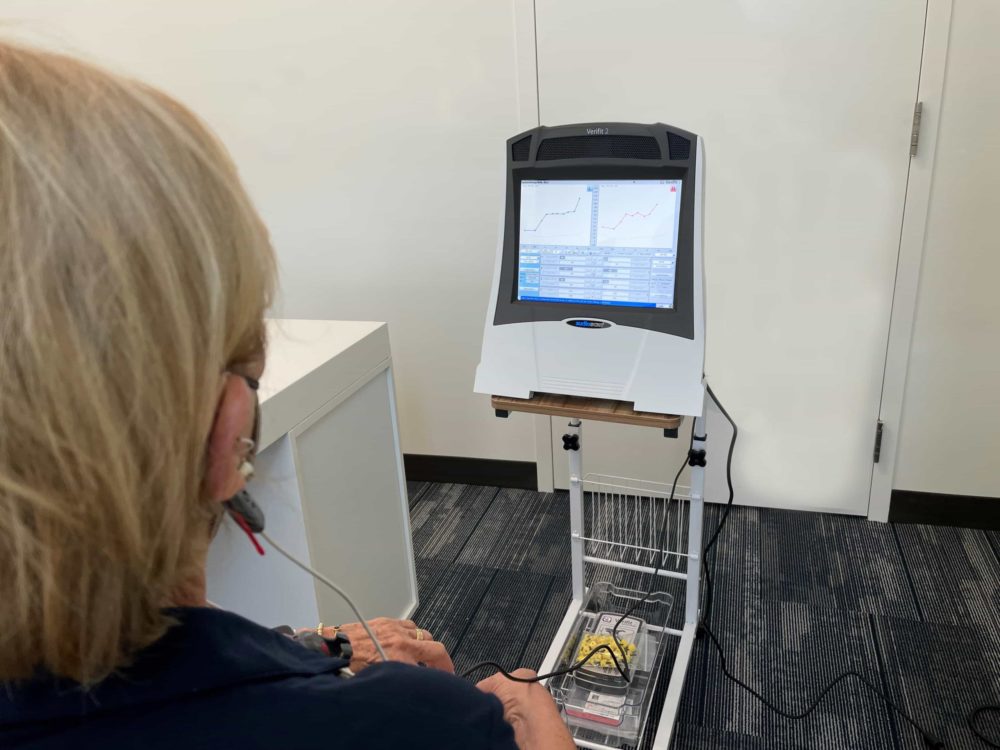“Real ear” and “speechmapping” are procedures that ensure your hearing aids are set correctly. These procedures allow audiologists to measure how loud sounds are and verify that the sounds are meeting your hearing aid prescriptions. Real ear and speechmapping differ depending on the type of sounds used during the measurement process. However, these terms are often used interchangeably, as you will see within this blog.
“Verification,” or making sure that hearing aids are set correctly, is a crucial part of hearing aid fittings. The American Academy of Audiology and American Speech-Language Hearing Association have guidelines that declare real ear verification as the gold standard of care. Both documents point to research that strongly show that these measures are not only reliable, but are better than other available verification methods. Consumer Reports also recommends that hearing aid users choose audiologists who use real ear measures.
Individual ear characteristics
We know what you’re thinking: why would a hearing aid’s sounds need to be verified? A major reason is because no two ear canals are alike. The hearing aid software determines how loud the speaker (known as the “receiver”) makes sounds. However, the size and shape of your ear canal can change how that sound is then perceived by you. Until speechmapping is performed, the audiologist doesn’t fully know the impact of your ear’s characteristics on sound.
Let’s do a little demonstration with a speaker to show the effect of a space’s shape/size on sound. Play your favorite song through your mobile phone. Now drop it into a clean, empty cereal bowl. Most people can hear that the song is louder, even though you didn’t adjust your phone’s volume. Now place your phone in a large mixing bowl. Try a large cup. Each of these containers changes the acoustics of the song, even though you have not adjusted the settings on the phone. Now imagine that your phone is a hearing aid and that each vessel is an individual ear canal. This will give you some idea of the effect of ear canal size and shape on amplified sound.
Troubleshooting
Real ear measurements can be extremely helpful in 1) making sure a hearing aid is functioning properly, 2) measuring changes an audiologist makes in order address any sound quality issues you may have 3) troubleshoot hearing aid problems or identify the need for cleaning or repair.
How are real ear responses measured?
During speechmapping, the hearing aids are worn by the user and connected to a computer so that adjustments can be made. A probe microphone (a tiny flexible tube) is placed in your ear along with the hearing aids. You will then be positioned in front of the verification equipment which has a speaker and display screen. The speaker plays a signal (often speech) and the microphone measures the sound in the ear canal.
Most speechmapping involves obtaining multiple measurements at different volumes. As a speech passage is played from the equipment speaker, the probe microphone picks up the amplified sound in the ear canal. This is shown on the screen in front of where you, the listener, is seated. The audiologist then reviews the data and makes changes as needed.
Free Hearing Aid Check June 29-30, 2022
Now that you know how important real ear measurements are in ensuring proper setting of hearing aids, join us at Capital Institute of Hearing & Balance, June 29th and 30th, 2022 from 8:30a-4:00p for a free hearing aid check. During this event, we will conduct speechmapping measurements on your current set of hearing aids or over the counter listening devices to verify that they are set properly for YOU. Call today to lock in your spot at 240-670-1200. We look forward to hearing from you!


